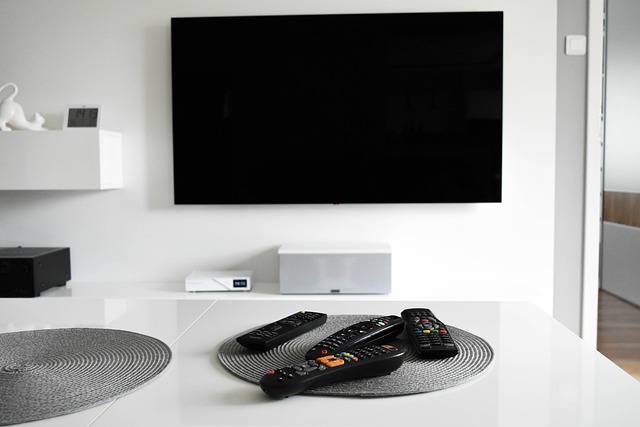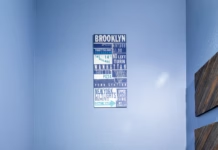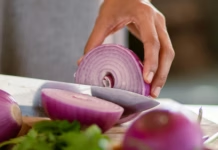Moving day is stressful enough without having to worry about broken dishes, scratched-up furniture, or a cracked TV screen. Unfortunately, some items are just more prone to damage than others when it comes to packing and transporting. So, what are the common culprits? And more importantly—how can you make sure they arrive at your new home safe and sound? Robert Sabo, the director of Elite Anywhere, is here to share his top tips on keeping your belongings in tip-top condition during your move.
1. Fragile Kitchenware
We’ve all experienced that horrible sound of a glass shattering inside a box. It’s gut-wrenching, and the kitchen is usually the worst offender when it comes to broken items. Wine glasses, plates, and anything ceramic are just waiting to chip or crack at the slightest knock.
Tip: Wrap each piece individually with bubble wrap or packing paper and place them vertically in the box—like you would stack them in a dishwasher. Fill in any empty spaces with crumpled paper to prevent movement. If you’ve got spare tea towels or cloths, use them as extra padding.
2. Electronics
Nobody wants to unpack at the new place only to find their TV screen cracked or laptop malfunctioning. Electronics are high on the list of items that get damaged during a move due to their sensitivity and cost.
Tip: If you’ve still got the original packaging, use it—it’s designed for safe transport. If not, use a sturdy box, cushion the bottom with blankets or foam, and wrap each item carefully. Clearly label the box “FRAGILE” and “THIS WAY UP” to avoid mishaps during handling.
3. Furniture
Ever tried squeezing a sofa through a narrow doorway? It’s like a complicated puzzle, only much heavier! Furniture can easily get scratched, chipped, or dented—especially at the corners. And don’t forget those wood finishes, which are prone to scuffing.
Tip: If it can be disassembled, take it apart. Remove sofa legs, table tops, and bed frames if possible. Wrap each piece with moving blankets and secure them with tape. Use cardboard to protect corners and vulnerable edges.
4. Artwork and Mirrors
Art and mirrors are even more fragile than they seem. One wrong move, and a beautiful framed painting or cherished sculpture could end up with shattered glass or broken pieces. They’re often oddly shaped and tricky to pack, making them high-risk items.
Tip: Invest in boxes specifically designed for artwork or mirrors. Use cardboard corner protectors on framed pieces, and wrap them in several layers of bubble wrap. This can mean the difference between a pristine picture and a heap of broken glass.
5. Large Appliances
Moving large appliances is no mean feat. They’re heavy, awkward to manoeuvre, and surprisingly easy to dent or scratch. If they’re not secured correctly, appliances like washing machines and fridges can also leak or suffer internal damage.
Tip: Unless you’re experienced, it’s often best to let the professionals handle large appliances. If you’re moving them yourself, use an appliance dolly, secure the doors with tape, and cover exposed surfaces with blankets. Make sure your fridge is completely defrosted and empty before moving.
6. Books and Paper Goods
Books might seem sturdy, but they’re surprisingly easy to damage. If packed too tightly, covers can bend or tear. If packed too loosely, heavy books can move around and warp the spines. And don’t forget the danger of moisture!
Tip: Lay books flat in small boxes so they don’t get too heavy, and alternate bindings to keep them straight. Wrap any valuable or collectible books individually, and keep boxes in a dry, cool spot to avoid moisture damage.
7. Plants
Plants are delicate, easily bruised, and can quickly wilt if exposed to the wrong conditions like sudden temperature changes or lack of sunlight. It’s almost as if they know you’re moving and decide to throw a fit just when you need them to stay healthy.
Tip: Transport your plants in your own car if you can, with plenty of airflow and sunlight. Don’t overwater them before the move, and use boxes or containers to keep them upright and secure.
Sabo concludes: “Moving doesn’t have to mean dealing with broken dishes, damaged furniture, or tangled jewellery. With the right packing strategies and a bit of extra care, you can protect even the most fragile items. So, invest in quality packing materials, label boxes clearly, and if all else fails, consider hiring professional movers for the tricky items. They’ve got the tools, the expertise, and can save you a lot of headaches (and heartaches) when it’s time to unpack.”

| [donate]
| Help keep news FREE for our readersSupporting your local community newspaper/online news outlet is crucial now more than ever. If you believe in independent journalism,then consider making a valuable contribution by making a one-time or monthly donation. We operate in rural areas where providing unbiased news can be challenging. |






















